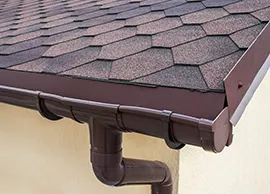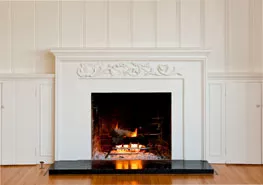Trying to figure out whether your home has enough insulation? While it can be quite easy to know whether a home has too little insulation in some respects, in others it can be quite complicated — and it’s not always a simple matter of adding more layers of what you already have until the number is big enough. Today, we’ll talk about how to really figure out whether or not your insulation’s adequate.
Ways to Think about How Much Insulation You Need
At the simplest level, there is a simple number for “enough insulation” as defined by builders in an area, state governments or federal bodies, like the Department of Energy. Insulation materials and assemblies like windows, walls and doors often come with a hard number meant to describe exactly how well they prevent heat from transferring through them.
The value we use for this, the R-value, tells you how much of a temperature difference you need between the two sides of the material before it transfers a significant amount of heat from one side to the other. But the R-value doesn’t tell you how well a material insulates against sound, how effective is it in getting into the nooks and crannies to create a true airtight and/or watertight barrier, how it reacts to moisture or how it looks if it’s going to be exposed in an attic or basement.
However, it is a good starting point. We can look at a home with a total R-value from its insulation in the exterior walls, attic or basement, and look at what organizations like the Department of Energy suggest for those parts of your home, then get a rough idea of whether your existing insulation falling woefully short of where it should be. Of course, even without R-values, there are signs to look for.
How to Tell If Your Home Needs More Insulation
If you spot any of these problems, it usually indicates a problem with the air and/or moisture barrier of your home; this often means an issue with your insulation, but it could be related to assemblies such as windows and doors, poor weatherstripping or even problems with your HVAC system. Signs you need more insulation include:
- Snow melts on your roof then refreezes at the edges
- Constant draftiness and temperature fluctuations between rooms
- Excessive moisture or other signs of pollution from outside air
- Pests and mold attracted to moisture inside of your home
- Unusually high energy bills despite well-working HVAC systems
- Floors, walls and ceilings feel especially cold in winter or hot in summer
- Pipes at risk of freezing in the winter
- Warm water coming out of the cold water tap in the summer
All of these have more explanations than poor insulation alone — but insulation is the most likely culprit. If you’ve noticed more than one of these signs, insulation is almost certainly to blame.
Why Getting Enough Insulation Matters
If your bills don’t seem too high and your home isn’t too uncomfortable, you may not want to deal with getting more insulation, but there’s a lot to gain from having enough insulation in your home.
Not only does it keep your home temperatures even and comfortable with significantly less energy — assuming you can even keep your home comfortable with bad insulation—it also helps keep moisture and pollution outside so your indoor filters can do their work. It helps keep pests and mold from taking up residence in your walls or attic. It keeps your home value high and reduces your risk of expensive damage from moisture stains, destructive pests, burst pipes and a host of other problems stemming from poor control over your home’s internal climate.
Types of Insulation to Consider
Modern insulation involves a lot of different materials, used in combination in most cases to achieve optimal results with minimal expense and difficulty. Common insulation types to consider include:
- Injection foam insulation: Liquid insulation is injected into walls and other cavities, where it fills the space and dries into a very reliable barrier.
- Fiberglass insulation: Traditional fiberglass batts and loose-fill still play a critical role in insulation in many places.
- Spray foam insulation: Spray foam insulation can be used almost anywhere, drying from its wet state into a thick layer that fills gaps and leaves minimal room for air infiltration.
- Radiant barrier insulation: A reflective layer, often installed in attics in sunny climates, radiant barrier insulation reflects sunlight rather than blocking heat energy.
- Rigid foam insulation: Rigid foam panels are primarily used in new construction for ease of installation.
- Rockwool insulation: Rockwool insulation is made of minerals spun into fibers, creating a uniquely rugged form of insulation.
Parting Thoughts
Figuring out exactly which sort of insulation you need and how much you need is often something best left to professionals — but understanding the problems, benefits and options you’re looking at and becoming a more informed consumer can only benefit you when the time comes to upgrade your insulation.
If you’d like to learn more about insulation for your home, reach out to the team at IBP Tampa for more information! Dial (813) 979-0230 to speak with a team member today.


